I spend a lot of my time at work collaborating with a team located in Israel. So when the opportunity arose to have the company send me over there for a week, I did the opposite of what I normally do for travel opportunities: I said yes.
There’s a 10 hour difference between home and Israel, so when we finally got to the hotel on Friday evening (local time) about 25 hours after leaving home, I didn’t really want to do much more than lay around for a day and recover. My co-worker convinced me that we should get outside to help get adjusted to the new timezone so we signed up for a tour of Jerusalem. There are a lot of things to see in Israel, but as a Christian, seeing Jerusalem and the surrounding area is pretty high on my list.
We’re staying at a nice hotel so we basically just asked the concierge what she recommended and asked her to sign us up for it. A bus picked us up from our hotel in Herzliya around 7am and after stopping at a couple other hotels and meeting up with some other groups, our group of around 40 people was on a bus headed from Tel Aviv to Jerusalem. That’s about a one hour drive and we stopped along the way at a rest area for coffee and a bathroom break. (The rest area was Elvis themed. This is not a joke.)
We had a great tour guide, and along the way, he filled us in on a lot of useful local customs information (you generally pay to use bathrooms, always tip 10% or risk being chased into the street, etc). We learned about local agriculture (olives and grapes), why Israeli wine is better than Italian wine (drink too much Italian wine you get drunk, too much Israeli wine and you’re holy), and generally enjoyed seeing the terrain. I’m probably showing my ignorance here, but it was so much greener than I expected. The guide said that Israeli’s plant a tree every time a baby is born and that they are the only country who entered this century with more trees than the start of the previous one. that seems hard to prove but it’s hard to deny that they’re basically terraforming their country.
Our first stop was at a vantage point near Hebrew University northeast of the city [map]. I was immediately struck by the scale of the area. For example, when I read about Jesus walking from the city to the Mount of Olives, I think of that as a decent sized hike. Nope. It’s down through a valley (the Kidron Valley) and up the other side. If you told me you could run it in a minute I might not bet against you. Or how about the distance from Jerusalem to the Jordan River? It’s less than 20 miles! Most of the Biblical area of Israel would fit between West Seattle and Snoqualmie Pass, Puyallup and Bellingham. It raised some new questions for me such as when Jesus went into the wilderness for 40 days and was tempted, why weren’t there other people around him? You could probably have sat on a hill and watched him for most of it. Anyway, from this great vantage point, we could Jerusalem, Bethlehem, Jericho and the tip of the Dead Sea.

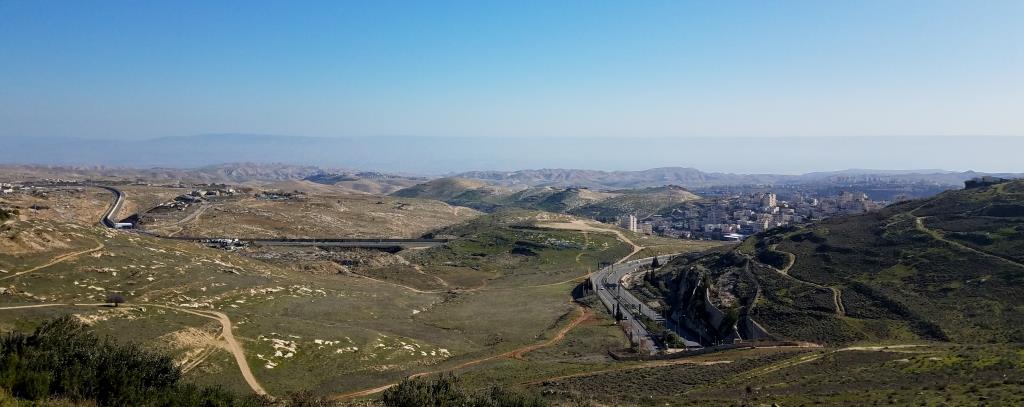
From there we hopped back into the bus and drove to a spot near the bottom of the Kidron Valley looking up at the eastern wall of the city. To the east of us was the Garden of Gethsemane. We spent some time there looking at the ancient olive trees and visiting the Church of All Nations. Olive trees can live well over 1000 years and it’s not impossible (but realistically unlikely) that some of the trees were around when Jesus was there. The church was built most recently in the early 1900s after previous versions had been destroyed but there were still some well-protected sections of the mosaic floor that date back to around 300 AD. There is a rock in the front near the altar that is supposed to be the rock where Jesus prayed before he was betrayed.
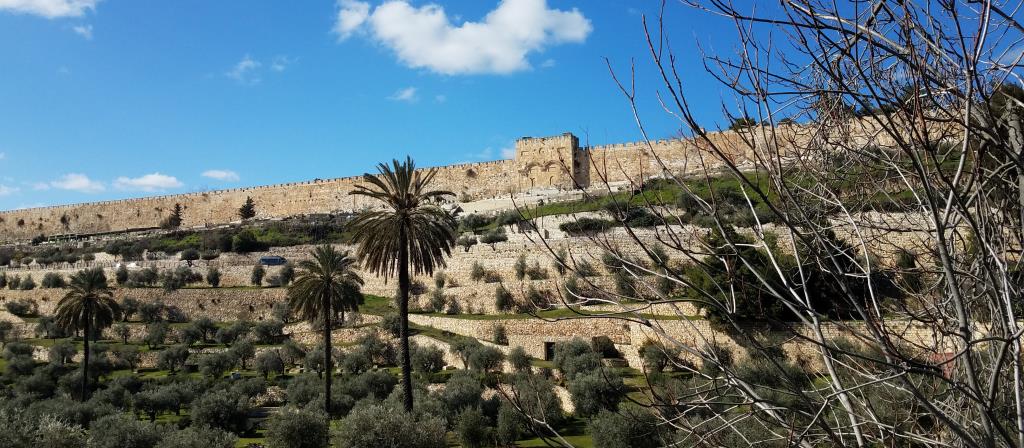
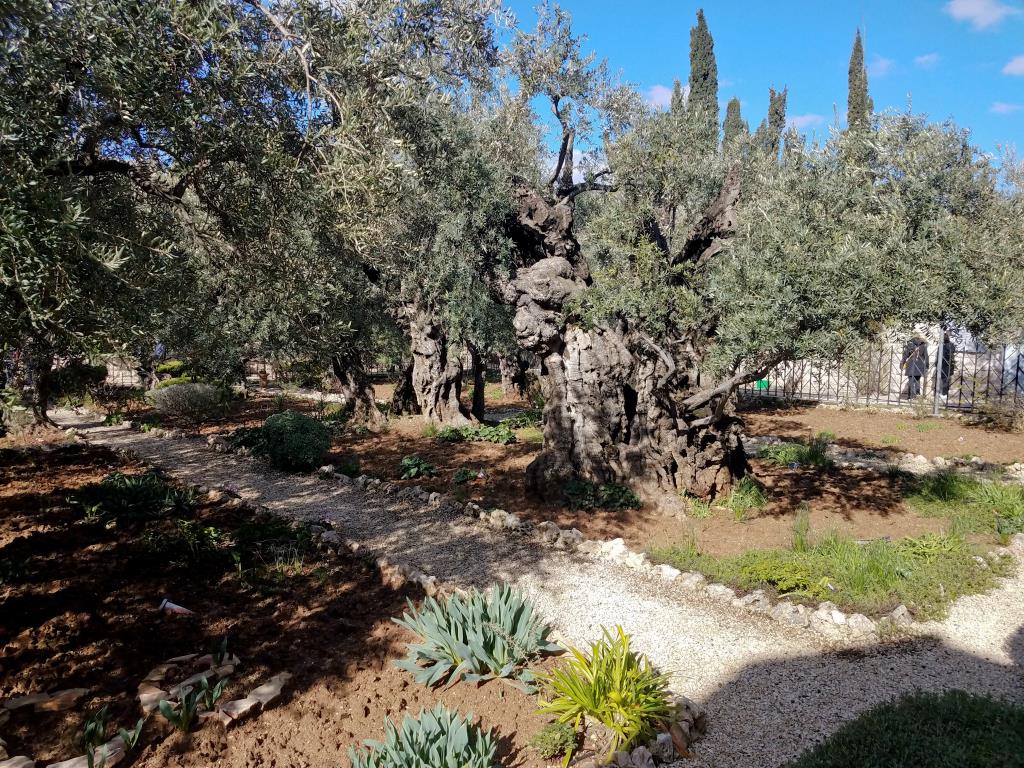
At the next stop, we got off the bus and started the walking part of our tour. We entered the city from the west side of the via the Jaffa Gate. My first impression of the city was “Hmm… it’s weird that I’ve never thought about what this place looks like in real life.” Up until that point, the images in my head of Jerusalem were whatever was in various Bible story books. So many civilizations have destroyed and rebuilt the city over the years that it’s hard to know how much of today’s city matches what it looked like in Jesus’s time, but it’s probably not that far off. (The last time the walls were built was in the 1500s by the Ottomans.) The whole city has been destroyed and rebuilt so many times that it’s much higher than before but supposedly many of the holy sites are still in the same spot. The city is currently divided into four quarters for the Christians, Armenians, Muslims and Jews. You can generally flow pretty freely between the quarters.
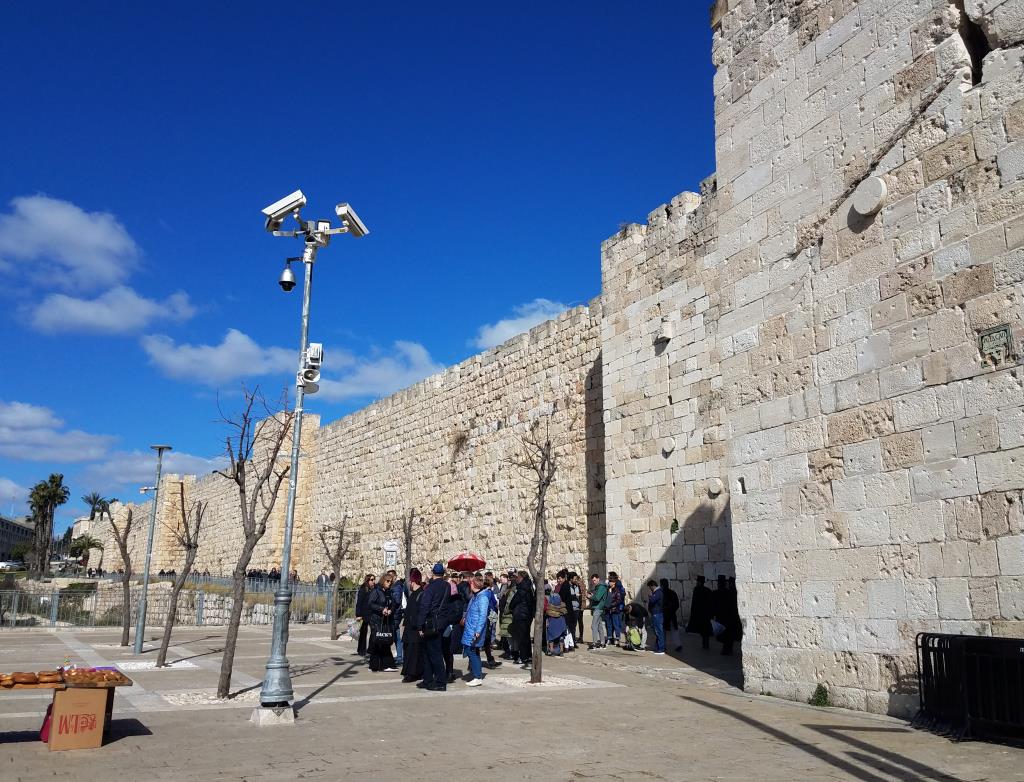
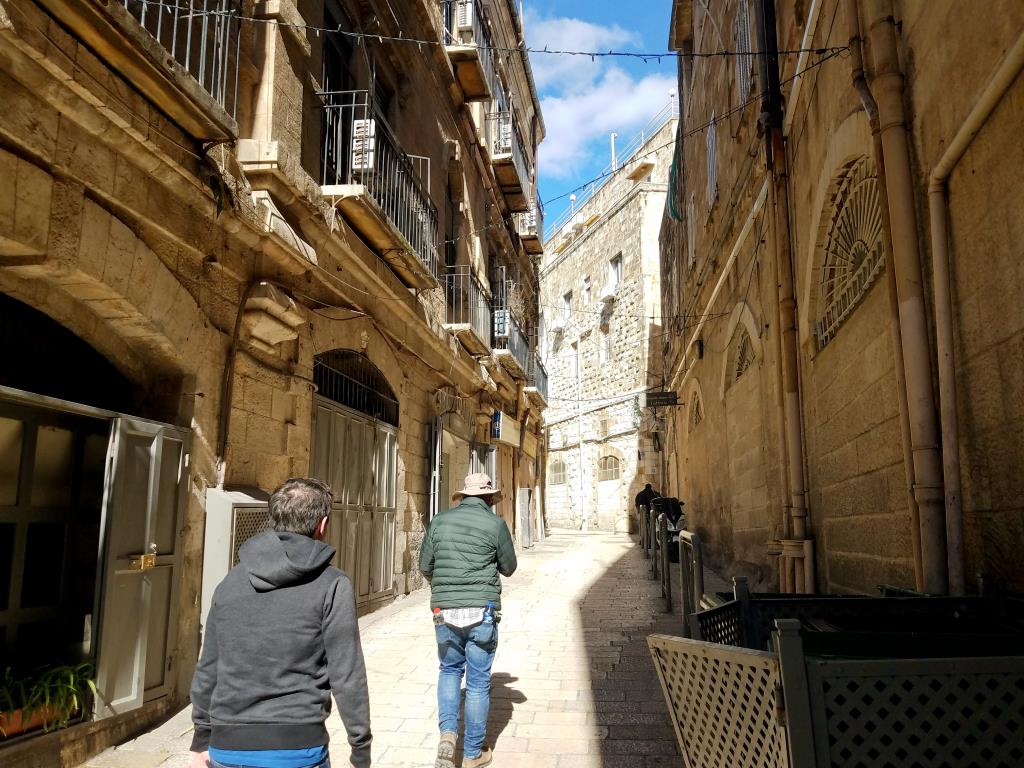
From Jaffa gate, we wound our way through the narrow streets with limestone buildings rising up on each side. The first major stopping point was the Church of the Holy Sepulchre. This church is now inside the city walls but during Jesus’s time, it was outside the city and it’s where he was crucified, his body was anointed and where he was buried. There are a lot of things in this church that were supposedly touched by Jesus many people wait in long lines to touch them, make their items holy relics, etc.
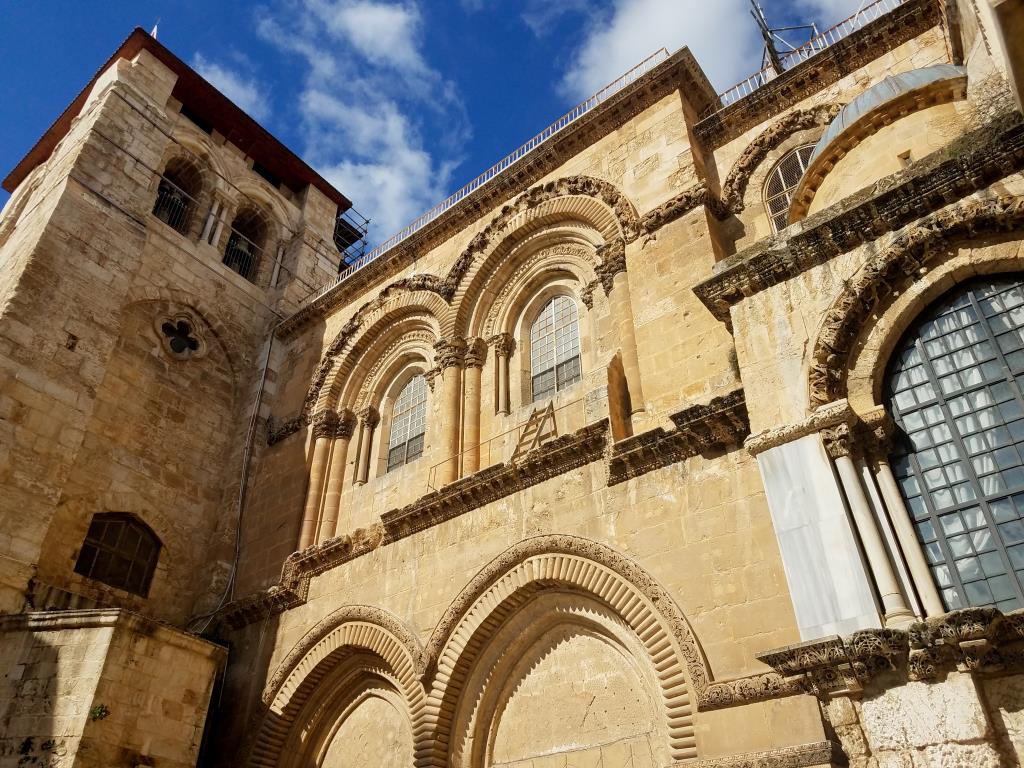
Next stop: lunch! Doing that on my own would have felt intimidating but our guide had it all planned out. We ate lunch on the roof of a cafe with a great view of the city and my falafel pita sandwich was good too.
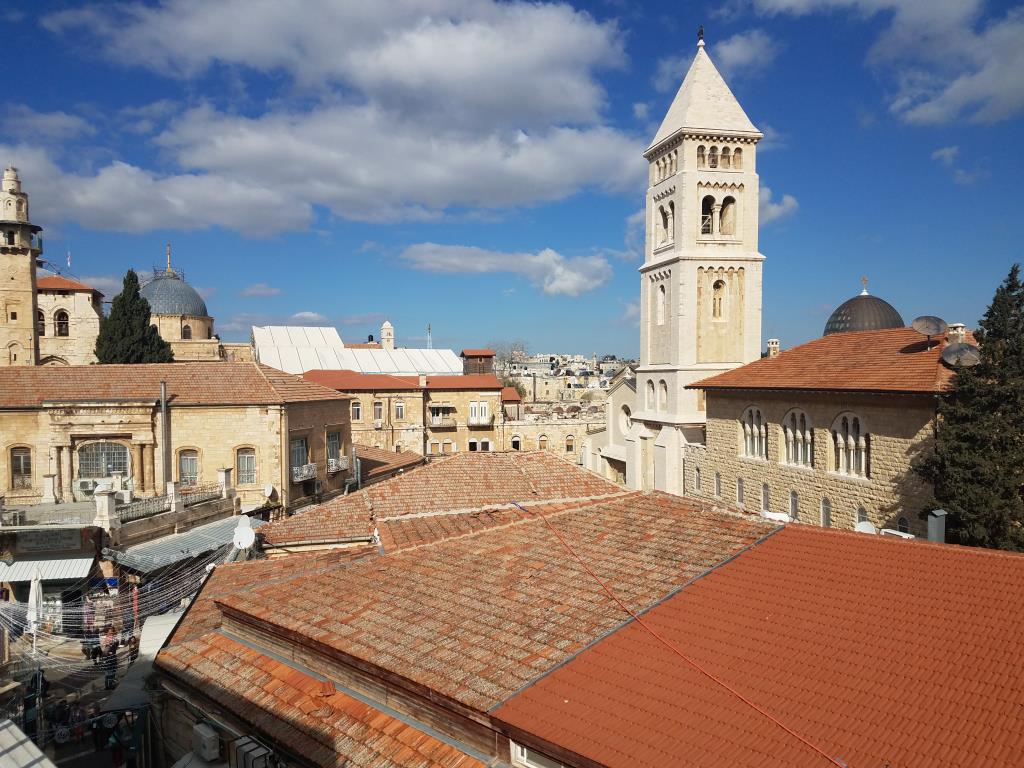
After lunch, we continued our walk down the Via Dolarosa which is the path that Jesus took to his crucifixion. There are 14 stations along the way and we covered the final ones at the Church of the Holy Sepulchre. Going backwards is not the common way to travel it but it means you get to walk downhill and you also don’t have to follow the crowds of people walking the “proper” way up the path. This was the busiest and most crowded area of our whole tour. We took brief stops at some of the stations but mostly tried to keep moving and keep the group together.
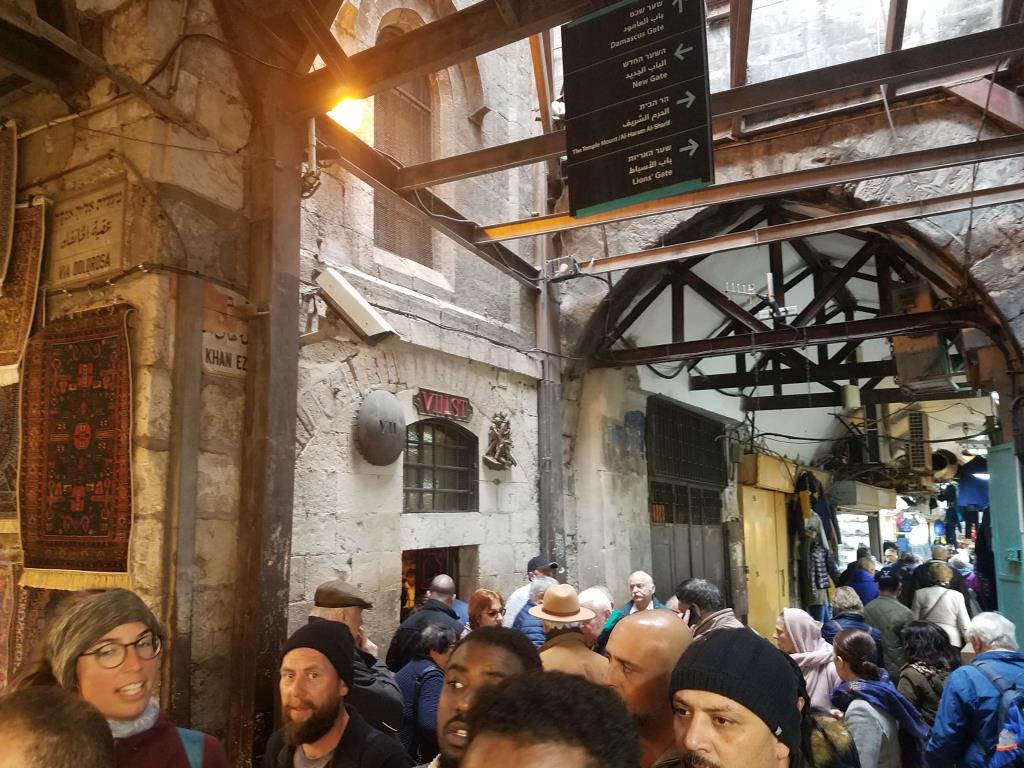
Around station 5 where Simon of Cyrene helped Jesus carry his cross, we broke off the Via Dolarosa and headed into the temple mount area. This is where the temple was and today this is where you find the famous “western wall”. I had been under the impression that this was the last remaining part of Solomon’s temple, but that’s not quite right. The wall we see now was finished around the time of Herod (~4 BCE). It was a retaining wall built around the area where the temple had been and we can only see the top half of the wall. The reason why Jews go to pray here is that the Holy of Holies from the original temple was on the other side of that wall. So this is the closest that we can get to the most holy place of Solomon’s temple. The most famous part of the western wall is in the Jewish quarter but it extends a long way into the Muslim quarter as well. I don’t have a great photo because this was one area where they really didn’t want you using technology on the Sabbath.
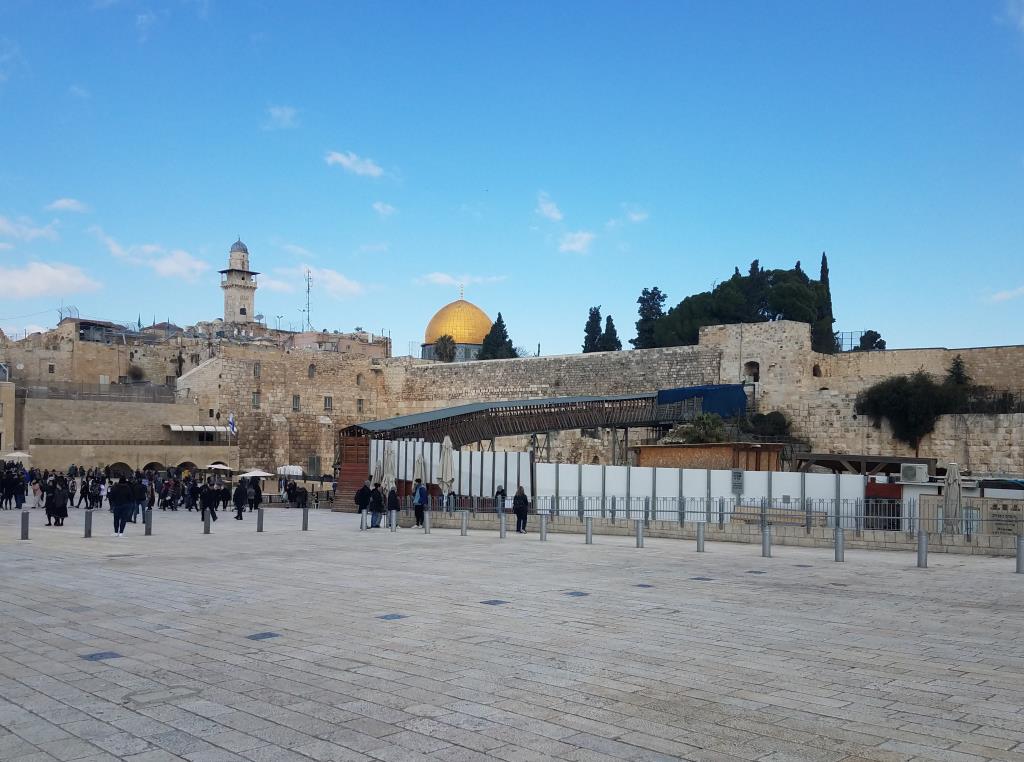
From the western wall, we walked along the top of the city wall and exited the city through Zion gate. Our next stop was Mt. Zion where we saw the room where Jesus had the Last Supper with his disciples and David’s tomb. Our guide noted that neither of these locations can be proven by archaeology, but they are likely very close to the correct area of the city.
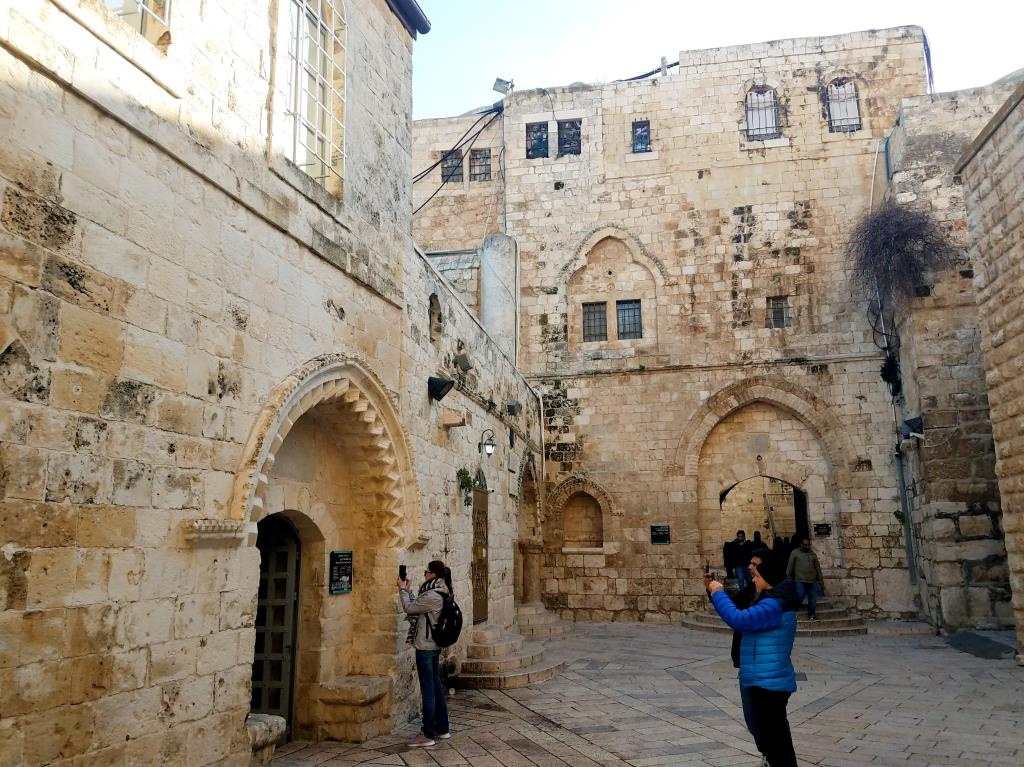
The final part of our tour took us along the outside of the wall and back to our bus near the Jaffa gate. The bus ride back to Tel Aviv took about an hour and then our guide had taxis lined up to take us back to our various hotels.
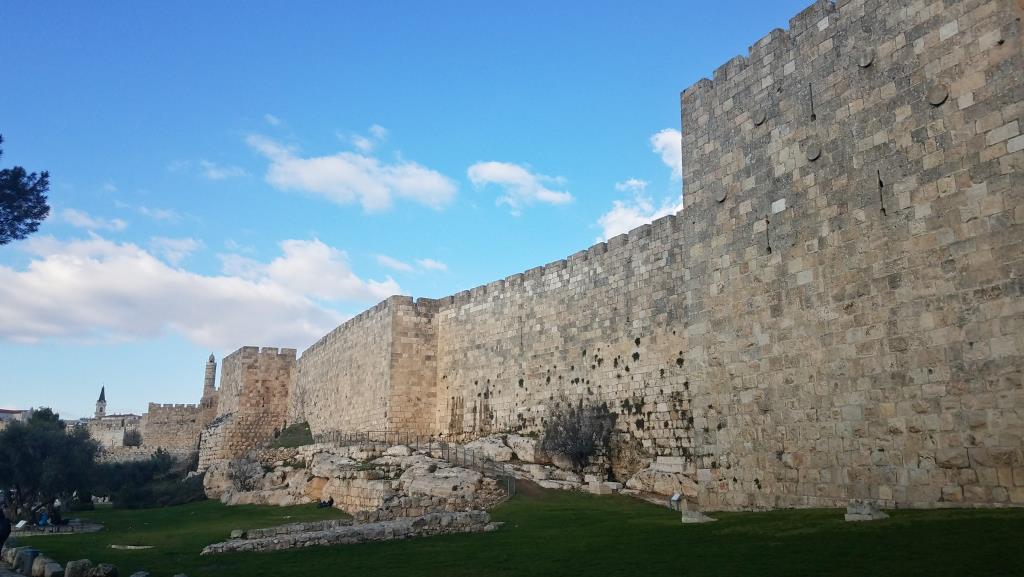
Someone in our group said that we covered about 5 miles on foot and I believe it. It was a lot of walking and a long day, but it flew by in a blur. I took a ton of pictures along the way, not necessarily with the intent of capturing great photos (the internet is full of those), but to remember where we had been.
Overall I give this tour two thumbs up. Specifically, this was the “Jerusalem Old and New” full day tour by Ben Harim tours and our guide was Itamar. He did a great job of explaining all the locations while keeping our group together and answering questions along the way. He also stuck to the facts about the realities of having so many faiths together in one location rather than getting into the politics.
Many of the churches and holy sites kind of blended together for me because the appearance of those locations has changed so much since Jesus was there. Plus, it’s hard to know how much of the relics and artifacts are legit and even if they are, they don’t make a difference to my faith. I’m going to heaven because Jesus died for my sins, not because I touched a rock that he touched too. However, seeing the architecture and landscape while understanding the distances and relative locations of sites filled my head with a lot of visuals that I’ll draw on for the rest of my life. I’m so thankful for this opportunity!

Hey Ben, thanks for the overview review. For sure there has to be a lot of great visuals that will come to mind as you read the Bible’s details of the areas that relate to Jesus travels and activities.